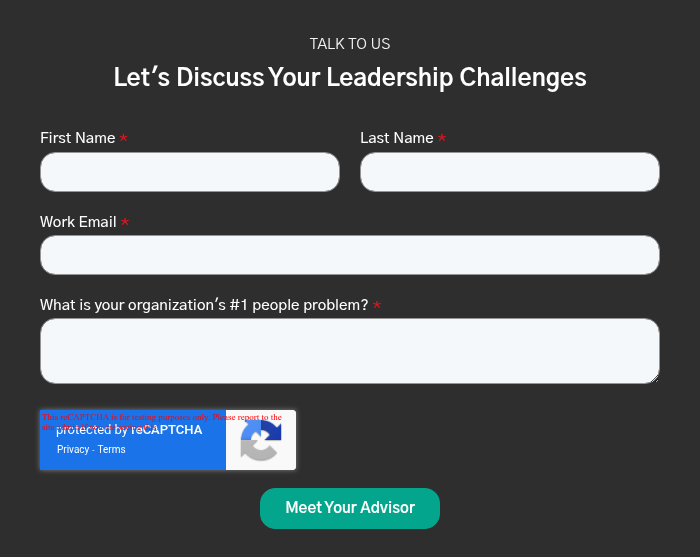
You’ve heard again and again the importance of developing the leaders within your company. But if you’re choosing skills to develop at random, these individuals won’t grow in the areas that most benefit your company.
For example, maybe you read something online that said leaders need to be innovative – but your company is going through a turnaround and needs conservative leaders to maintain its stability. If you invested in innovative leadership without considering your company’s needs, then the company would suffer detrimental effects.
The Strategic Leadership Alignment ™ at The Metiss Group ties leadership development back to your company’s strategic plan. By communicating your company’s goals, strengths, and weaknesses, our behavior experts will carefully help you select the most beneficial and strategic leadership practices for your company.
There are 22 total Leadership Practices, and each company selects 5-10 to prioritize in their strategic development plan. This article will give you a greater understanding of each practice and how The Strategic Leadership Alignment ™ helps develop leaders in those areas.
The 22 Leadership Practices defined
The Metiss Group uses the Management Research Group’s LEA 360 tool to guide The Strategic Leadership Alignment™. This tool defines 22 Leadership Practices, which are broken up into six categories.
Creating a Vision
- Conservative: Studying problems in light of past practices to ensure predictability, reinforce the status quo and minimize risk.
- Innovative: Feeling comfortable in fast-changing environments; being willing to take risks and consider new and untested approaches.
- Technical: Acquiring and maintaining in-depth knowledge in your field or area of focus; using your expertise and specialized knowledge to study issues and draw conclusions.
- Self: Emphasizing the importance of making decisions independently; looking to yourself as the prime vehicle for decision-making.
- Strategic: Taking a long-range, broad approach to problem solving and decision making through objective analysis, thinking ahead, and planning
Developing Followership
- Persuasive: Building commitment by convincing others and winning them over to your point of view.
- Outgoing: Acting in an extroverted, friendly, and informal manner; showing a capacity to quickly establish free and easy interpersonal relationships.
- Excitement: Operating with a good deal of energy, intensity, and emotional expression; having the capacity to keep others enthusiastic and involved.
- Restraint: Maintaining a low-key, understated, and quiet interpersonal demeanor by working to control your emotional expression
Implementing a vision
- Structuring: Adopting a systematic and organized approach; preferring to work in a precise, methodical manner; developing and utilizing guidelines and procedures.
- Tactical: Emphasizing the production of immediate results by focusing on short-range, hands-on, practical strategies.
- Communication: Stating clearly what you want and expect from others; clearly expressing your thoughts and ideas; maintaining a precise and constant flow of information.
- Delegation: Enlisting the talents of others to help meet objectives by giving them important activities and sufficient autonomy to exercise their own judgment.
Following Through
- Control: Adopting an approach in which you take nothing for granted, set deadlines for certain actions, and are persistent in monitoring the progress of activities to ensure that they are completed on schedule.
- Feedback: Letting others know in a straightforward manner what you think of them, how well they have performed, and if they have met your needs and expectations.
Achieving Results
- Management focus: Seeking to exert influence by being in positions of authority, taking charge, and leading and directing the efforts of others.
- Dominant: Pushing vigorously to achieve results through an approach that is forceful, assertive, and competitive.
- Production: Adopting a strong orientation toward achievement; holding high expectations for yourself and others; and pushing yourself and others to achieve at high levels.
Team Playing
- Cooperation: Accommodating the needs and interests of others by being willing to defer performance on your own objectives in order to assist colleagues with theirs.
- Consensual: Valuing the ideas and opinions of others and collecting their input as part of your decision-making process.
- Authority: Showing loyalty to the organization; respecting the ideas and opinions of people in authority and using them as resources for information, direction, and decisions.
- Empathy: Demonstrating an active concern for people and their needs by forming close and supportive relationships with others.
How do you choose 5-10 leadership practices?
The key to choosing 5-10 focus areas is to decide what your company desires most for its leaders in the future.
Maybe your leaders have done a knockout job to get your company to where it is today. But when you look to the future, is it going to require the same leadership skills?
Some practices sound great on paper until you consider their entire definition. For example, Structuring is one that a lot of companies think they want for their senior leadership. The idea of having structure sounds great, sure. But creating that structure isn’t necessarily what the C-suite should be doing.
So it’s not as easy as picking a handful of practices because they sound good. The last thing you’d want to do is inadvertently select the wrong combination and have detrimental effects on your leaders’ growth. That’s why the behavior experts at The Metiss Group spend so much time throughout the process listening to your company’s goals and issues. They’ll help you decide which practices make a good fit for your company, its leaders, and its overall direction.
They’ll also help you understand how some practices affect each other when combined. For example, we rarely see companies that are both high in conservative and innovative. The two contradict each other.
Something else to consider: not all levels of your company need to have the same focus areas. Maybe mid-level management doesn’t need to focus on Strategic or Innovative, while the C-Suite would prefer to focus on these “Creating a Vision” areas.
How does The Metiss Group develop leaders in the chosen focus areas?
Once a behavior expert helps you choose your focus areas, you’ll decide which leaders to develop first. We recommend taking a top-down approach: start with top executives, then look at their direct reports, and so on.
The individuals you select will take the Strategic Leadership 360 assessments to define their leadership style. They’ll also ask their peers and direct reports for feedback. This 360-degree approach helps these individuals collect honest, private feedback so they can assess their strengths and weaknesses.
Spoiler alert: no one is perfect. Even your best leaders. The Metiss Group will help choose three leadership practices for each individual to develop based on your company’s strategic direction.
We’ll provide a detailed action plan for each individual so they’ll know which small steps make the biggest impact. The plan is measurable and time-based, helping your leaders hold themselves accountable throughout the process.
It doesn’t end there, though. The Metiss Group offers ongoing support and one-on-one coaching, so your leaders can ensure their development is sustained over time.
The Strategic Leadership Alignment™ isn’t for everyone
Just a warning: The Strategic Leadership Alignment™ isn’t a perfect fit for every company. If your CEO is what we call a “chaos creator” – in other words, if they can’t stick to a strategic plan and are always chasing the next great thing – then The Strategic Leadership Alignment™ may not be for you.
But if you understand the importance of growing the leaders within your company, and now you’re ready to take it to the next level, you need The Strategic Leadership Alignment™. Not only will your leaders grow (which, guess what, will make them more loyal to your company), but they’ll specifically grow in the areas your company wants to prioritize.
Create the leaders of your business’ future
Leadership development without a strategy can be like throwing ideas at the wall and seeing what sticks. Why would you waste money building leaders who can achieve results, when you really need leaders who can create a vision and develop a followership? Your company’s leaders should grow in the areas that most benefit your company and match the direction it’s heading.
Now that you understand the different focus areas within The Strategic Leadership Alignment™ program and how they tie into your company’s strategic plan, it’s time to meet an advisor with The Metiss Group so you can develop the leaders your company needs most. Just fill out the form to get started.

